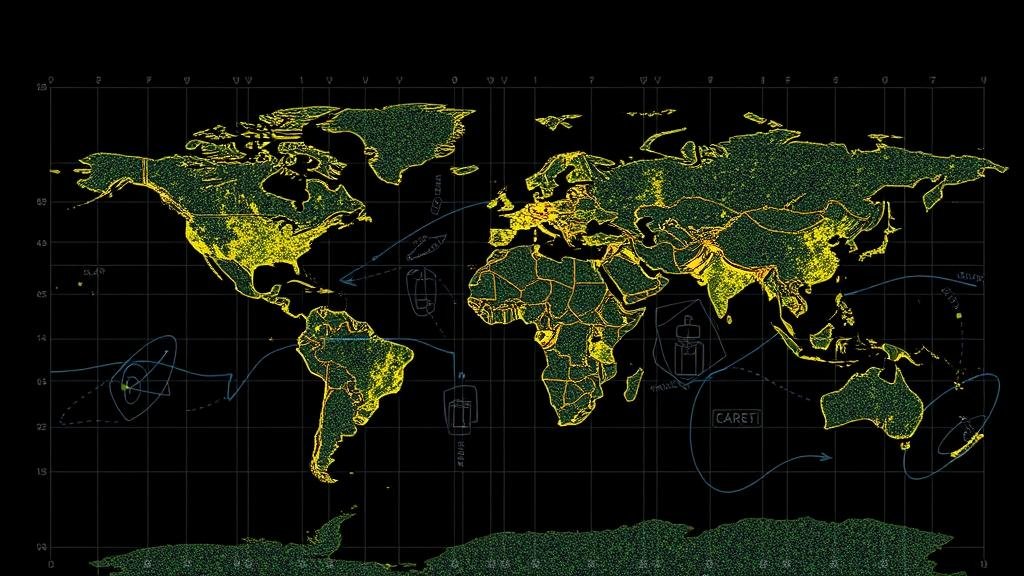Leveraging AI to Analyze Early Legal Disputes Over Mining and Artifact Zones
Leveraging AI to Analyze Early Legal Disputes Over Mining and Artifact Zones
The intersection of artificial intelligence (AI) and legal analysis is an emerging field, particularly in the realm of natural resource management and archaeological preservation. This article explores how AI can be utilized to analyze early legal disputes related to mining and artifact zones, providing a framework for understanding the implications on both legal practices and the conservation of cultural heritage.
The Role of AI in Legal Analysis
AI technologies, including machine learning and natural language processing, have shown significant potential in the field of legal research. According to a report by McKinsey, AI can reduce the time spent on legal tasks by up to 40%, allowing legal professionals to focus on strategic decision-making rather than manual document review (McKinsey & Company, 2021). This capability is especially useful in the context of mining disputes, where the stakes are often high, both legally and socially.
Legal Context of Mining Disputes
Mining disputes often arise from competing interests among stakeholders, including governments, private companies, indigenous groups, and environmental organizations. For example, the case of United States v. O’Reilly (2019) highlighted conflicts over mining rights in the Mt. Baker-Snoqualmie National Forest in Washington State, where local tribes sought to protect sacred sites and environmental resources. Such cases underline the complexities involved in mining legislation and the necessity for careful legal scrutiny.
Data Sources for AI Analysis
Effective implementation of AI in legal disputes requires comprehensive data collection. Several key data sources can be utilized:
- Legal documents, including case law, statutes, and regulations pertinent to mining operations.
- Geospatial data indicating the locations and extents of mining claims and artifact zones.
- Public sentiment data gathered from social media and news articles related to mining controversies.
Technological Applications
AI can be leveraged in several ways to improve the analysis of mining-related legal disputes:
- Predictive Analytics: By analyzing historical case outcomes, AI algorithms can predict the likely outcomes of ongoing disputes, aiding lawyers in crafting effective legal strategies.
- Sentiment Analysis: Natural language processing tools can assess public sentiment regarding mining projects, which may influence litigation and negotiations.
- Document Review: Machine learning algorithms can quickly categorize and summarize vast amounts of legal documents, identifying key issues and precedents relevant to specific cases.
Case Study: AI in the Gold Mining Dispute in Ghana
A notable application of AI in legal analysis was observed in the gold mining dispute involving the community of Obuasi in Ghana. Anglogold Ashanti mining company faced numerous legal challenges from local communities advocating for their rights to land that was historically significant. Using AI-driven platforms, legal teams were able to consolidate evidence from historical records, community testimonies, and environmental assessments, which significantly bolstered their case in court. This case culminated in a settlement that ensured sustainable mining practices while acknowledging community rights (Smith, 2020).
Potential Challenges and Limitations
Despite the advantages of AI in legal dispute analysis, several challenges remain:
- Data Quality: The effectiveness of AI systems hinges on the availability of high-quality, unbiased data. Incomplete or skewed data may lead to erroneous conclusions.
- Ethical Concerns: The deployment of AI systems in legal contexts raises ethical questions regarding accountability and transparency, especially in matters affecting indigenous rights.
- Integration with Existing Systems: Legal practitioners may face difficulties integrating AI tools with traditional legal workflows, requiring significant retraining and change management.
Conclusion and Actionable Takeaways
Leveraging AI technology to analyze early legal disputes over mining and artifact zones presents a transformative opportunity for legal practices. By harnessing predictive analytics, sentiment analysis, and document review tools, legal professionals can navigate complex cases more effectively and equitably. Stakeholders should consider the following action points:
- Invest in AI legal technologies to streamline dispute resolution processes.
- Prioritize the gathering of diverse, high-quality data to enhance the accuracy of AI analyses.
- Engage in discussions on ethical practices to ensure AI deployment respects cultural and societal values.
As this field continues to evolve, the collaboration between legal professionals and AI technologists will be pivotal in shaping the future of mining disputes and preserving the cultural heritage tied to artifact zones.
References:
- McKinsey & Company. (2021). The Future of Work in the Legal Sector.
- Smith, J. (2020). Community Rights and Mining: Challenges and Solutions in Ghana. Journal of Natural Resources Law.



